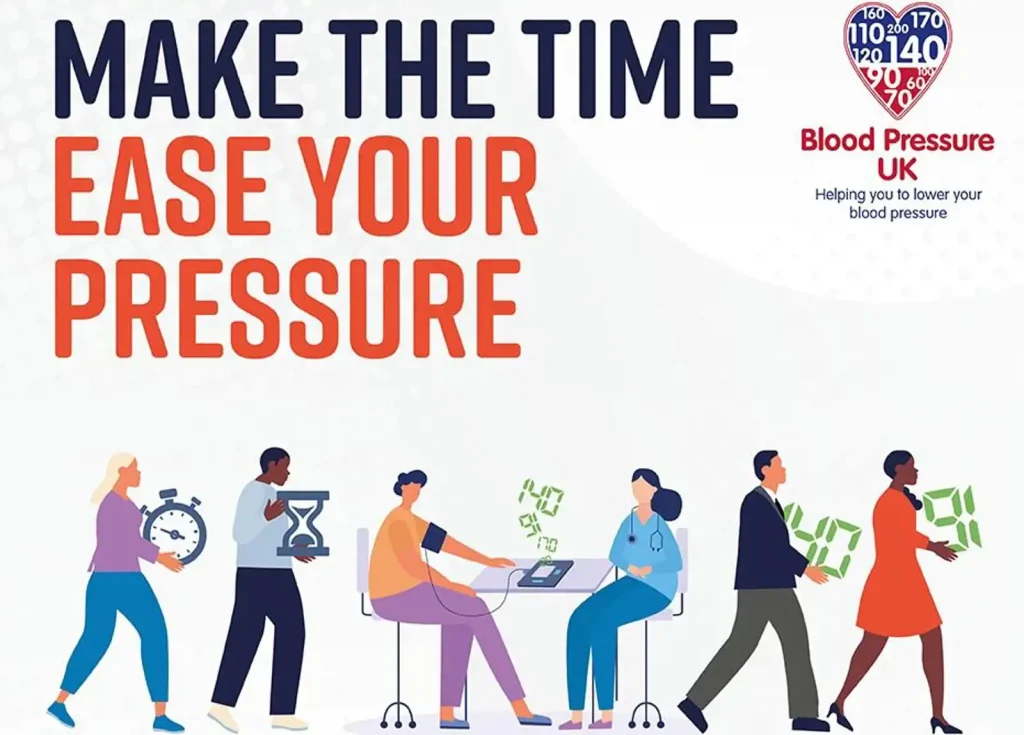
This year, for Know Your Numbers! Week – the UK’s largest blood pressure testing and awareness campaign – Blood Pressure UK is encouraging the nation to take up home monitoring.
Why is monitoring your blood pressure important?
Did you know that around a third of UK adults have high blood pressures, which are a major cause of diseases like strokes and heart attacks?
Six million people have undiagnosed high blood pressures meaning they don’t know they’re at risk. So, despite it being one of the most preventable and treatable conditions, high blood pressure is still considered the UK’s biggest silent killer.
High blood pressure occurs when your blood is being pushed around your body with too much force, putting strain on your blood vessel walls, and in turn your heart. Conversely, if your blood pressure is too low and being pumped at a very low force, your body won’t receive the energy and oxygen it needs, which can make you feel dizzy or faint.
Knowing your blood pressure numbers and taking the time to measure them (no matter your age) is the first step to help prevent these serious diseases.
How to monitor your blood pressure
You can use a home monitoring device or smart watch / Fitbit that has the necessary functions.
Both will generate blood pressure measurements in millimetres of mercury (mmHg) with each reading producing two numbers. The numbers represent your maximum blood pressure when your heart contracts and your minimum blood pressure when your heart is at rest. They’re written as a fraction, for example:
- 70/40 mmHg to 90/60 mmHg = low blood pressure
- 90/60 mmHg to 120/80 mmHg = ideal blood pressure
- 120/80 mmHg to 140/90 mmHg = pre-high blood pressure
- Above 140/90 mmHg = high blood pressure
If your readings are consistently above 140/90 mmHg, this means you have a high blood pressure and should contact a healthcare professional.
How to monitor your blood pressure
You can use a home monitoring device or smart watch / Fitbit that has the necessary functions.
Both will generate blood pressure measurements in millimetres of mercury (mmHg) with each reading producing two numbers. The numbers represent your maximum blood pressure when your heart contracts and your minimum blood pressure when your heart is at rest. They’re written as a fraction, for example:
- 70/40 mmHg to 90/60 mmHg = low blood pressure
- 90/60 mmHg to 120/80 mmHg = ideal blood pressure
- 120/80 mmHg to 140/90 mmHg = pre-high blood pressure
- Above 140/90 mmHg = high blood pressure
If your readings are consistently above 140/90 mmHg, this means you have a high blood pressure and should contact a healthcare professional.
Smart watch
Many smart watches enable users to estimate their blood pressure as well as their electrocardiogram (ECG), which measures the heart rate, rhythm and electrical activity indicating the heart’s level of health.
Different brands of smart watches monitor your blood pressure in different ways – with some measuring your pulse arrival times and others using sensors to detect the change in blood volume. These measurements are then converted into an electrical signal and processed by an algorithm to calculate the blood pressure which is displayed on your screen.
It’s a convenient method which you can use anytime and easily monitor any trends or changes that may occur to your blood pressure.
Some smart watches require you to use a home monitoring device and advise that their results should be taken as an estimate with some flex in accuracy.
Home monitoring device
If you choose to use a home monitoring device to measure your blood pressure, here are some tips from Blood Pressure UK’s online resources hub on how to get started:
- Make sure you’re well-rested and haven’t eaten or drank caffeinated drinks within 30 minutes before taking any measurements
- Take three measurements on each arm, each about two minutes apart and calculate the average
- Once you know which arm that has a slightly higher reading, always use this same arm going forwards
- During the first week, take three measurements every day in both the morning and evening to collect a useful overview of your ‘typical’ blood pressure
- Don’t worry about small changes in blood pressure
- Speak to a healthcare professional if you’re worried or concerned about your readings or home monitoring.
How high your blood pressure is will determine often you should measure it, but your doctor or nurse will be able to advise you on this. If your blood pressure stays stable for a long time, you might only need to measure it once every four to six months.
To learn more about how to measure your blood pressure at home, watch the video below.
For more information, visit https://www.bloodpressureuk.org/know-your-numbers/



